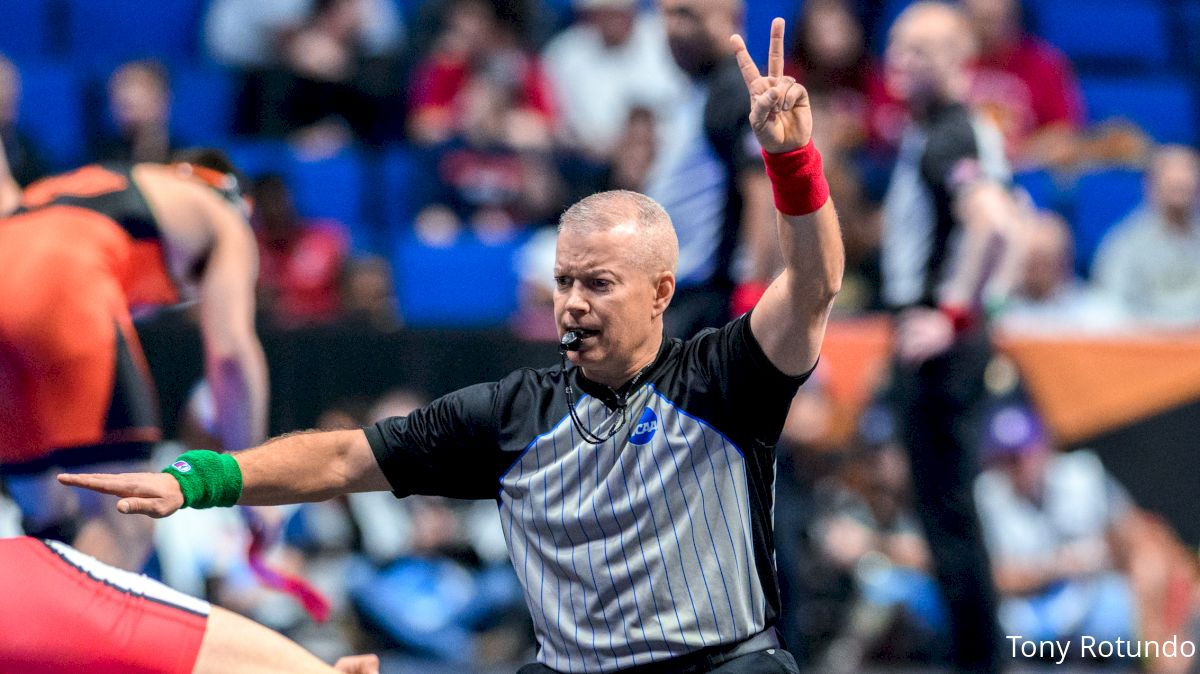NCAA Playing Rules Oversight Panel Passes 13 Of 14 Recommended Changes
NCAA Playing Rules Oversight Panel Passes 13 Of 14 Recommended Changes
The NCAA Playing Rules Oversight Panel on Thursday gave its stamp of approval to 13 of the 14 changes recommended by the college wrestling rules committee.

The NCAA Playing Rules Oversight Panel on Thursday gave its stamp of approval to 13 of the 14 sweeping changes recommended in April by the college wrestling rules committee.
As a result, next season will usher in a series of significant changes, though not quite as transformational as the rules committee recommended.
Three-point takedowns are on the way and dozen other rulebook changes will be made before college wrestling cranks back up this fall.
One recommended change that isn’t happening: The stipulation that a wrestler must score near-fall points and accumulate a minute or more of advantage time in order to score a riding time point.
The NCAA wrestling rules committee gets one opportunity every two years to implement changes, and the group took a big swing this year in an effort to ramp up scoring and action. Following a two-week feedback period from college coaches last month, the NCAA Playing Rules Oversight Panel voted Thursday to move 13 of those recommendations forward.
“I like that we’re looking at things to see how we can create more action and maybe make it a little more fan-friendly as well,” Princeton coach Chris Ayres said in April. “I’m always in favor of those types of things and just evolving the sport. Sometimes I think we get stuck in our ways and we’re afraid to make some changes because we cradle the tradition of the sport. I like that they’re trying to do some different things.”
A longtime bedrock of the sport’s scoring system — the two-point takedown — has been cast aside and the value of a takedown has been increased to three.
“The people who are up in arms and unhappy about it, we can always change back,” Stanford coach Rob Koll said in April. “It’s not like these are set in stone. Why not give it a try? Let’s see what can happen. Obviously, scoring’s been down a little bit. I love the idea of a three-point takedown.”
“You give up a takedown to your back for four points at the end of the first period, the match is essentially over,” Koll said. “You can’t catch up. I always compare it to freestyle — and maybe that’s not what we’re trying to do here — but you’re down by four or five points and that match is still going. You feel like you have a shot. But with that (two-) point takedown, you have to take him down five times. Who the heck is going to do that against anybody good? The match is over. It gives a person a chance to get back in the match.”
In addition to the three-point takedown, the three-point near-fall is on the way back after being phased out in 2015 when the NCAA implemented a four-point near-fall for a wrestler who holds an opponent in danger for a four-count. Next season, near-falls will be worth two, three and four points depending on whether a wrestler receives two, three or four swipes.
Also on the list of approved changes:
— The rule which states top position wrestlers must only aggressively work to break down the opponent will change to also requiring him to pursue near-fall points and/or a pin.
“The way it’s (been) stated in the rulebook — and we changed that a little bit — it’s an attempt to break down,” said North Carolina coach Coleman Scott, a member of the rules committee. “That’s what guys were doing, so it wasn’t technically stalling. (But) that’s hard to watch for me. I’ve watched the sport for 30 years and I want guys to be viscous on top and want to turn. If you’re not incentivized to, why do it?”
— The current mandatory five-second count for waist and ankle rides will now include all situations in which the top wrestler grasps the bottom wrestler’s ankle.
— The hand-touch takedown has been eliminated, meaning all takedowns, in order to be secured, would require a demonstration of control beyond reaction time.
— Video review will now provide the referee with the authority to confirm or overturn all calls or missed calls during a video review challenged sequence rather a single move.
— The penalty for a delayed coach’s video review challenge request will be changed from a control of mat violation and team-point deduction to a loss of the video review request.
— The first medical forfeit of a tournament will count as a loss on the wrestler’s record, unless the medical forfeit occurs immediately following an injury default in the tournament.
— Standardized weigh-ins across all competition types will move to two hours or sooner rather than two hours for tournaments and one hours for duals.
— Officials can now let action continue after penalizing an illegal hold and not require a stoppage after imminent scoring finishes when the safety of wrestlers is not in danger.
— The facial hair rule — which limited wrestlers to beards of no longer than a half inch in length — has been eliminated.
— Any true placement matches in a tournament will not alter the final team score.
— Weight certification for all institutions is permitted to begin Sept. 1.
“Trying to get something done sometimes is difficult,” Oklahoma State coach John Smith said. “I was on that (rules) committee and it was really good to see this group come together and propose some things I think we all really like.”